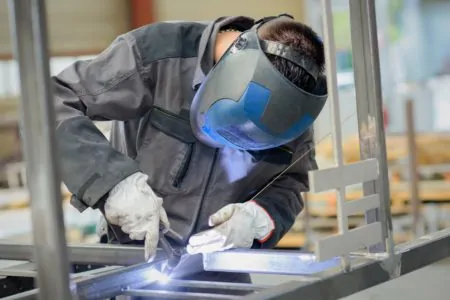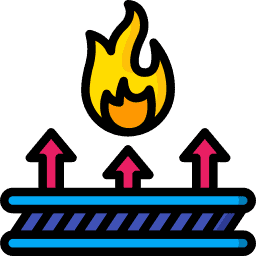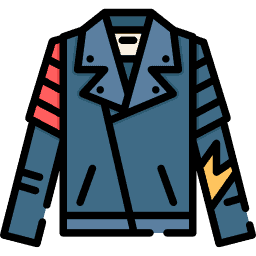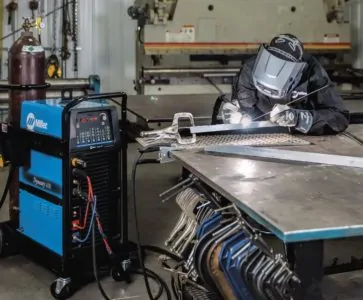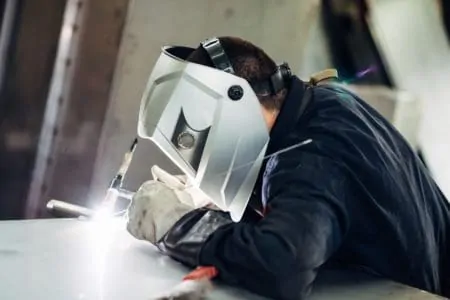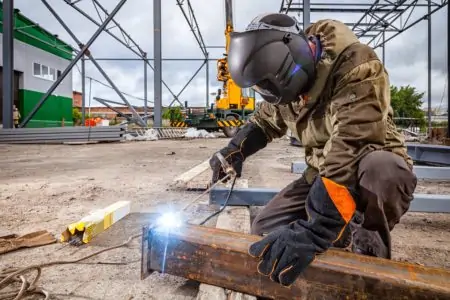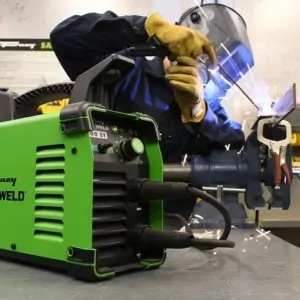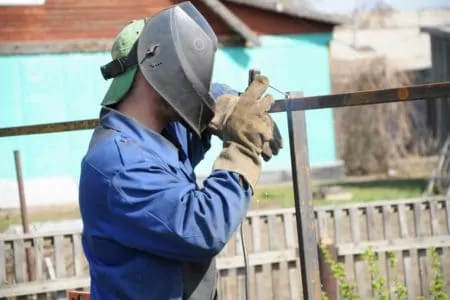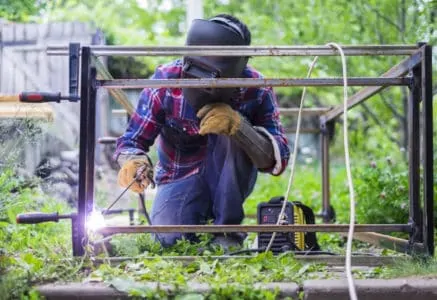Staying safe while you weld is the first and last consideration of every welder. The best welding jackets offer full protection for your arms and torso from sparks, heat and spatters of molten metal.
We look at the 7 best welding jackets to keep you safe.
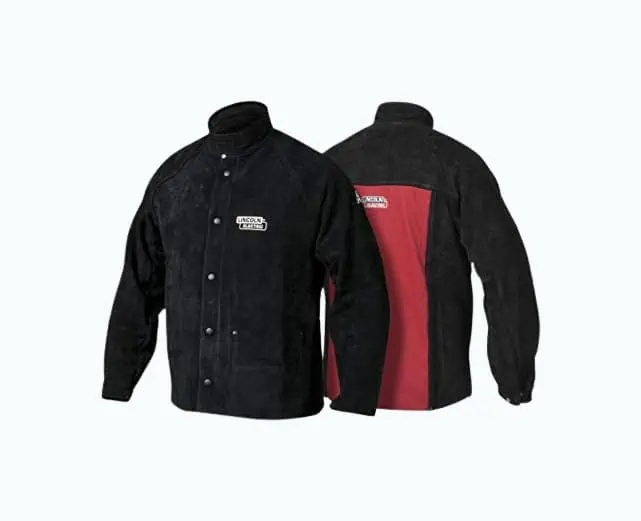
- Multi-positional use
- Leather/cotton mix
- Adjustable cuffs
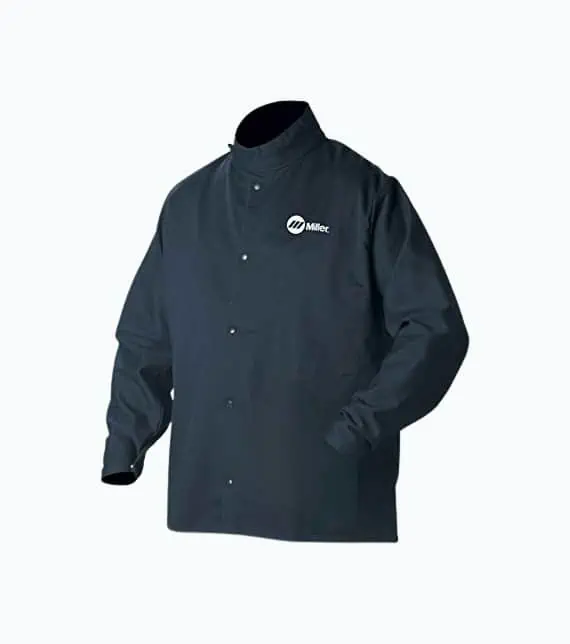
- Lightweight material
- Breathable fabric
- Cotton/nylon mix
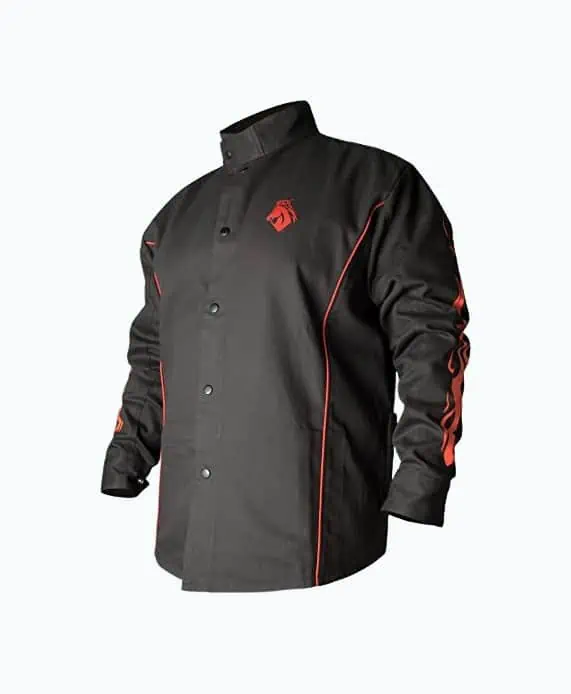
- Adjustable cuffs & waist
- Flame-resistant material
- Welder’s collar
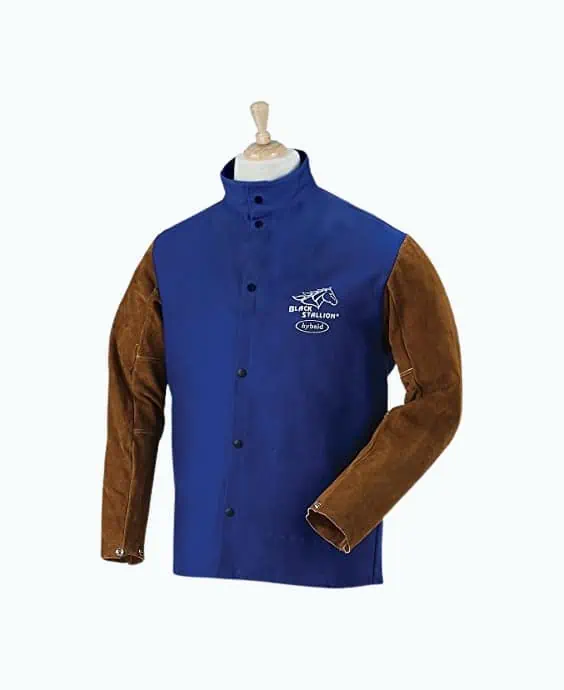
- Unisex
- Has scribe pockets
- Has snap-cuffs
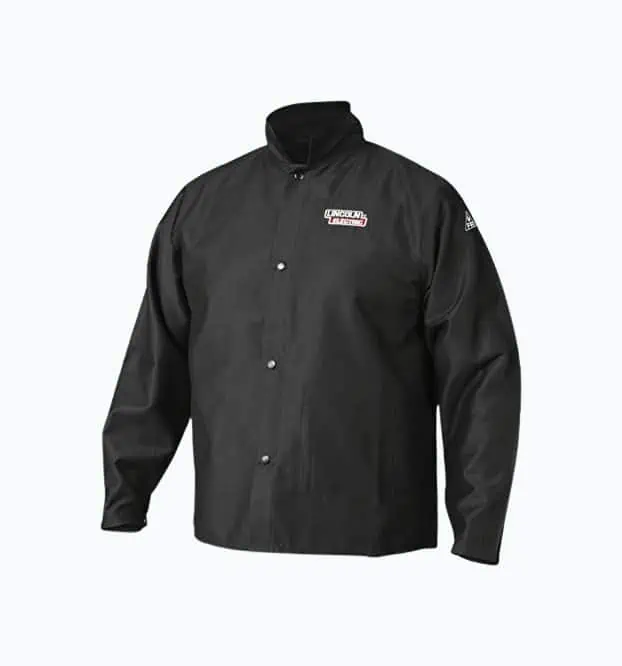
- Premium FR cotton
- Machine washable
- Flip-up collar
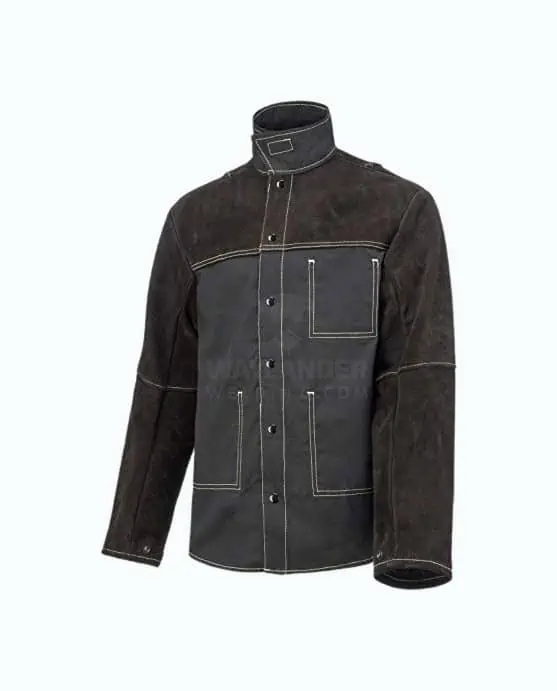
- Satin-lined sleeves
- Split cowhide sleeves
- Snap buttons
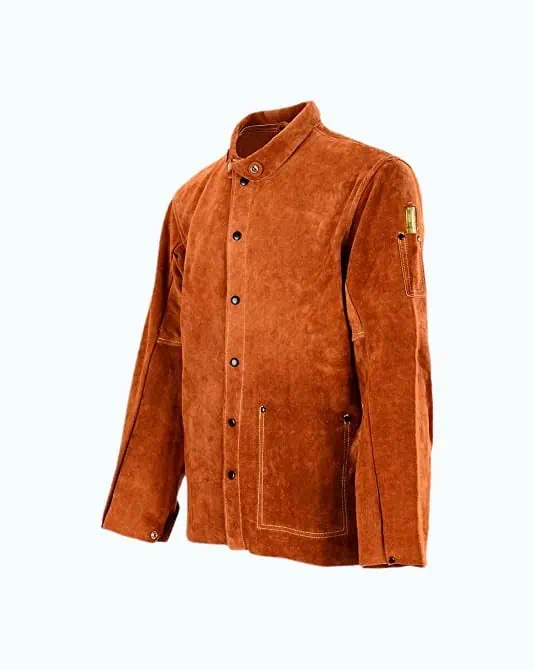
- Kevlar stitching
- All-leather
- Suits all welding processes
Review Methodology: At Sensible Digs, we pride ourselves on thorough analysis and hands-on experience in evaluating the best welding jackets. Our team of professionals conducts comprehensive research, comparing each product based on a set criteria, including safety, durability, comfort, and heat resistance. We take into account user experiences, measuring performance and ranking each jacket accordingly. Our findings help to identify key decision-making factors, such as material quality, design choices, and their effects on the user. We offer evidence-based reviews, with data that sets apart top-performing jackets from the rest. Trust our assessments and make an informed choice for your welding safety needs.
The Best Welding Jackets of 2024
Lincoln Electric Heavy-Duty Welding Jacket
Best Welding Jacket for Overhead Welding
If you typically find yourself overhead welding, this is the jacket to protect you. It is constructed of split-leather, situated on the front and sides to protect you from spatter and sparks.
The sleeves are also leather, and the cuffs adjust to avoid molten debris falling inside the jacket as you work overhead. The two-part cowhide armpit design improves movement, making it the ideal off-position coat.
It has a velcro spatter guard button liner, leather neck protection and a large internal pocket for added storage. This jacket also has a breathable, FR cotton back that weighs just 9 ounces and conforms to the ASTM D6413 safety standard.
Pros
- Multi-positional use.
- Leather/cotton mix.
- Adjustable cuffs.
- Inside pocket.
- Breathable.
Cons
- Expensive.
- Heavy.
Product Specs
| Weight (pounds) | 5.49 |
| Dimensions (inches) | 6 x 1 x 1 |
| Material | Leather and cotton |
| Size range | Medium to XXXL |
| Price | $$$ |
| Color | Black and red |
Our Ratings
User Experience
Miller Electric Welding Jacket
Best Welding Jacket for Summer
Welding in the summertime can be hot work, especially if you are wearing a heavy welding jacket. This Miller Electric coat is lightweight and breathable, so you can stay cool and protected during the hotter months.
The fabric is a mix of 88 percent cotton and 12 percent flame-treated nylon. It comes in navy blue and has a stand-up collar for added neck protection. The cuffs snap closed to stop anything nasty creeping up your sleeve, and it also has an inside pocket for storage.
This jacket is intended for lighter welding duties, so it lacks the durability of heavier coats. Still, it is incredible value for money and offers sufficient protection to keep you safe.
Pros
- Lightweight.
- Breathable.
- Ideal for summer.
- Cotton/nylon mix.
- Great price.
Cons
- Lighter duties only.
- Less durable than some coats.
Product Specs
| Weight (pounds) | 1.5 |
| Dimensions (inches) | 14.4 x 12.4 x 1.2 |
| Material | Cotton and nylon |
| Size range | XL |
| Price | $ |
| Color | Navy blue |
Our Ratings
Personal Perspective
BSX BX9C Black Cotton Welding Jacket
Best Beginner Welding Jacket
This jacket seems almost too cheap. It could easily have been a budget option. It is the ideal welding coat to get when you are starting your welding journey. It features a welder’s collar for increased protection and flame-resistant cotton to protect you against sparks and spatter.
It is a lightweight jacket, so if you are welding in a hot environment, it will keep you cool. It also has adjustable cuffs and a waist strap for a more fitted look, and to guard against any hot debris entering the coat.
It comes in 8 sizes, ranging from small to 5XL, so no matter what size you are, this jacket has you covered.
Pros
- Lightweight.
- Adjustable cuffs and waist.
- Flame-resistant.
- Welder’s collar.
- Super-cheap.
Cons
- Lighter duties.
Product Specs
| Weight (pounds) | 16 ounces |
| Dimensions (inches) | 10 x 16 x 1.5 |
| Material | Cotton |
| Size range | Small to 5XL |
| Price | $ |
| Color | Black and red |
Our Ratings
Community Feedback
Revco FRB9-30C Black Stallion Hybrid Welding Coat
Best TIG Welding Jacket
This slim-fitting jacket has leather sleeves and a 9-ounce cotton body. The sleeves have snap wrists to stop any debris or molten metal from entering the coat. The snap-shut buttons are designed to make the jacket easy to get on and off. They also provide a secure means of sealing against sparks.
The cotton is flame-retardant, the neck stands up for extra protection, especially when you have your welding helmet on, and it has dual scribe pockets. This jacket is a unisex garment, and it comes in sizes ranging from small to 5XL.
Pros
- Unisex.
- Cotton and leather.
- Scribe pockets.
- Snap-cuffs.
Cons
- Cotton is lightweight.
Product Specs
| Weight (pounds) | 2.20 |
| Dimensions (inches) | 16 x 12 x 1.6 |
| Material | Cotton and leather |
| Size range | Small to 5XL |
| Price | $$ |
| Color | Blue and brown |
Our Ratings
First-Hand Impression
Lincoln Electric Premium FR Cotton Jacket
Best Lightweight Welding Jacket
This Lincoln Electric Premium welding coat has flame-retardant fabric that conforms to the ASTM D6413 standard and is comfortable to wear. It has a flip-up collar for added protection, an anti-static and mildew-resistant coating, as well as adjustable cuffs.
The premium FR cotton extinguishes flames while making the jacket lightweight and breathable. You can wash this coat up to 50 times before it starts to lose its flame-resistance, so it should stay looking good for a few years yet.
If you want a jacket with multi-woven stitching, is comfortable to wear and super-durable, this could be the one for you.
Pros
- Premium FR cotton.
- Machine washable.
- Adjustable cuffs.
- Flip-up collar.
Cons
- Inconvenient pocket placement.
Product Specs
| Weight (pounds) | 1.6 |
| Dimensions (inches) | 6 x 1 x 1 |
| Material | Cotton |
| Size range | Medium to 3XL |
| Price | $$ |
| Color | Black |
Our Ratings
User Experience
Waylander Welding Jacket
Best MIG Welding Jacket
This Waylander is a heavy-duty welding jacket, which makes it ideal for stick and MIG welding where there is a lot of spatter. It has split cowhide arms and shoulders for the ultimate protection against sparks and heat, as well as an FR cotton body to keep you cool in hot conditions.
The sleeves are lined to improve movement, and the velcro sealed snap buttons protect against anything penetrating the jacket. The cuffs are adjustable, the stitching is Kevlar for increased flame-resistance, and there are 3 large inside pockets for handy storage.
It comes in 6 sizes from medium to 4XL, and it is an ideal choice of jacket if you are serious about protection.
Pros
- Satin lined sleeves.
- Split cowhide sleeves.
- Snap buttons.
- Adjustable cuffs.
Cons
- Expensive.
- Collar restricts movement.
Product Specs
| Weight (pounds) | 2.74 |
| Dimensions (inches) | 13 x 11.3 x 2.8 |
| Material | Cotton and leather |
| Size range | Medium to 4XL |
| Price | $$ |
| Color | Brown |
Our Ratings
Personal Perspective
QeeLink Leather Welding Jacket
Best Leather Welding Jacket
This leather welding jacket is the best all-round option for protection against all types of welding techniques. It is also a great option when welding overhead and vertical stick positions.
Constructed from split cowhide and stitched entirely with Kevlar, this is an industrial-strength welding jacket. It has an adjustable collar and cuffs to stop any molten metal or sparks from penetrating inside, and if you are not 100 percent satisfied with the coat, QeeLink will offer you your money back.
The only downside with this coat is it is heavy and hot in the summer months, so you might want to get a lighter option when the days get warmer.
Pros
- Kevlar stitching.
- All-leather.
- Suits all welding processes.
- 100 percent money-back guarantee.
Cons
- Heavy.
- Too warm in the summer.
Product Specs
| Weight (pounds) | 4.75 |
| Dimensions (inches) | 14.65 x 12.68 x 3.39 |
| Material | Leather |
| Size range | Small to 4XL |
| Price | $$ |
| Color | Brown |
Our Ratings
Community Feedback
| Product | Best | Weight | Dimensions | Material | Size range |
|---|---|---|---|---|---|
| Lincoln Electric Heavy-Duty Jacket | Overhead Welding | 5 lbs | 6 x 1 x 1″ | Leather & cotton | Medium to XXXL |
| Miller Electric Welding Jacket | Summer | 1.5 lbs | 14.4 x 12.4 x 1.2″ | Cotton & nylon | XL |
| BSX BX9C Cotton Welding Jacket | Beginner | 16 oz | 10 x 16 x 1.5″ | Cotton | Small to 5XL |
| Revco Black Stallion Hybrid Coat | TIG Welding | 2.2 lbs | 16 x 12 x 1.6″ | Cotton & leather | Small to 5XL |
| Lincoln Electric FR Cotton Jacket | Lightweight | 1.6 lbs | 6 x 1 x 1″ | Cotton | Medium to 3XL |
| Waylander Welding Jacket | MIG Welding | 3 lbs | 13 x 11.3 x 2.8″ | Cotton & leather | Medium to 4XL |
| QeeLink Leather Welding Jacket | Leather | 4.75 lbs | 14.65 x 12.68 x 3.39″ | Leather | Small to 4XL |
What Is a Welding Jacket Made Of?
Welding jackets are typically constructed from leather, heavy cotton, denim, carbon fiber and even rubber. A combination of aramid and rayon is also a popular choice of materials. It is important that the coat protects your arms, neck and torso from spatters of molten metal and sparks.
Welding jackets are part of your personal protective equipment (PPE), and your employer must issue you with a welding coat that conforms to the Occupational Safety and Health Administration standards.
Importance of Wearing a Welding Jacket
Welding jackets minimize risk, keeping you as safe as possible during the welding process. An arc emits radiation and UV, two things that are bad for your skin if exposed. Welding jackets also protect against skin damage.
Sparks and hot metal can burn through standard coats, melting the material into your skin. This causes severe injuries. Your welding jacket should be fire-resistant and thermally insulated.
How To Choose the Best Welding Jacket
Do you look for comfort, weight or style first, or is it all about safety? Let’s take a look at some considerations to keep in mind.
What Size Welding Jacket Do I Need?
Welding jackets are much like regular coats when it comes to sizes. They are either small, medium or large, although you do get variations extending to XXXL sizes. To get the sizing right, measure the circumference of the largest part of your chest with a tape measure, making sure you allow for space to move in the coat.
If your belly sticks out further than your chest, measure that in the same way. Once you have your measurements, compare them to the size charts of the coat you want and pick the one that’s nearest to yours.
How Long Will My Welding Jacket Last?
A good quality welding jacket will last between 2 years and a lifetime, depending on the wear and tear it gets and the frequency of the usage.
Cheaper jackets are prone to losing their heat and fire resilience faster than a high-end leather jacket, which might last you a lifetime.
FAQs
If the Coat Fits
Welding requires the very best protective equipment, and nothing matches the safety features of a welding jacket to keep you from harm. Whether you MIG, TIG or stick weld, there is a safety jacket out there for you.
Just remember that if you are welding in hotter environments, you will need to stay cool. So the coat you choose could make all the difference.
